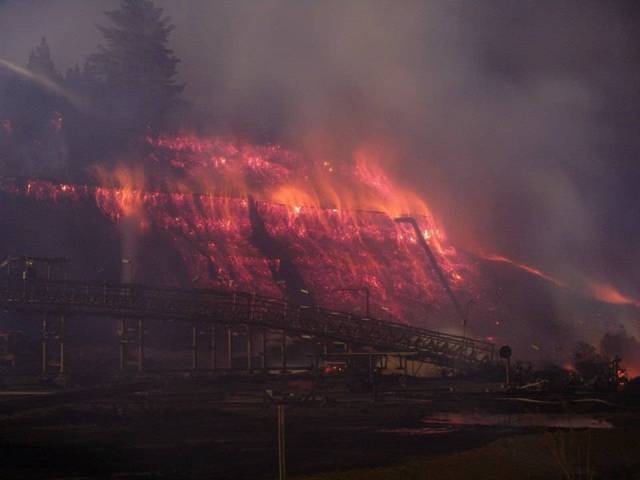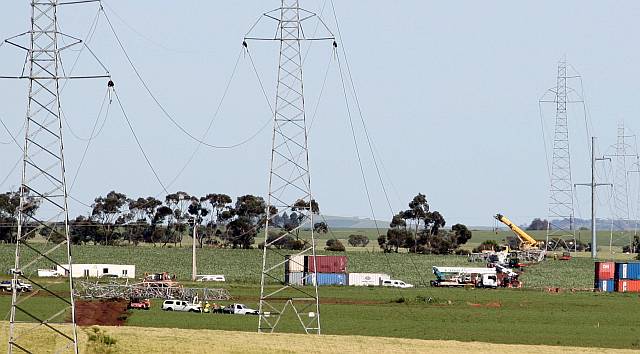|
Cost of electricity
Contrary to claims made by the AEF and as documented by Ben Phillips in the table on the right, electricity costs increased more in the period 2006-2016 in the mostly coal-powered eastern mainland states than they did in South Australia, which built most of its wind farms in that period.The cost of electricity in SA rose by 87% in the period 2006-2016 while the corresponding figures for NSW, Victoria and Queensland were 109%, 119% and 136% respectively.
In 2017 SA's energy generation was getting close to the government's target of 50% by 2020.
Cost of wind power
Contrary to the claims made by AEF wind power is comparable in cost to coal power and certainly a lot less expensive than coal power with sequestration ('clean coal').AEF want to have their cake and eat it too
AEF makes much of high power prices in SA, as noted above, but on 2017/03/03 they posted about 'soaring electricity prices' in Queensland, which has less renewable energy than any other state in the nation.|
|
Are new coal-fired power stations economically viable?
The Australian Clean Energy Finance Corporation, in their submission to the Finkel Report into the Future Security of the Australian National Electricity Market stated that:"New fossil-fuel generation in Australia would be unlikely to find private sector finance at an acceptable cost."Groups like the AEF seem to think that if they make the same dubious claims about disadvantages in renewable energy often enough people may believe them. I wonder if those who support action on climate change tell the truth often enough people might believe us?
|
|
Jobs
|
Surely anyone with a conscience would prefer a job in a clean, ethical,
industry rather than in a dirty, polluting, industry that is severely
damaging our planet.
The AEF likes 'clean coal'
|
As reported in The Conversation, 2017/02/02 "New coal plants wouldn't be clean, and would cost billions in taxpayer subsidies". And that is without the geosequestration of the carbon dioxide; which is so expensive that it is simply not viable economically.
Looking at the photo on the right and the one above, which industry would
you call clean?
|
South Australia's power failures had nothing to do with renewable energy
How many times have climate scientists warned us that violent weather events and severe heatwaves will become more common with the warming of the atmosphere?South Australia suffered two such events – exceptional winds and rains – in September 2016; the first on 14-15th and the second on 28-29th. The second of these events, coming on top of already saturated soils, caused flooding and the loss of grid-electricity over the whole of the state.
There are four major power transmission lines connecting Adelaide to the north of the state; 22 or 23 power pylons on three of these were blown down. We were told that the state's power system could have handled the loss of two of the transmission lines, but three were too many; the system had to shut down to avoid further damage. (The saturated soil combined with high winds caused some of the pylon's legs to pull out of the ground; others were simply bent over by the force of the wind.)
There were more storms and power outages in South Australia in December 2016, this time no transmission lines were downed, but far more trees and power distribution lines. (Transmission lines are high voltage lines that take power long distances, distribution lines take the power from local 'sub-stations' to customers.) In many cases the falling trees took power lines down with them. In my area, the Clare Valley, alone, there were thousands or tens of thousands of trees downed, my than I can recall ever seeing previosly.
In a February 2017 heatwave 90,000 homes had their power cut for short periods when there was insufficient power available in South Australia. The problem was that the Australian Energy Market Operator had not given Pelican Point power station sufficient time to power up on a day of low power generation and high consumption.
The AEF and others blamed all these power outages on South Australia's renewable energy. Blaming damage caused by burning coal on the renewable energy industry is classic Orwellian 'reasoning' by groups devoted to the dying coal industry.



